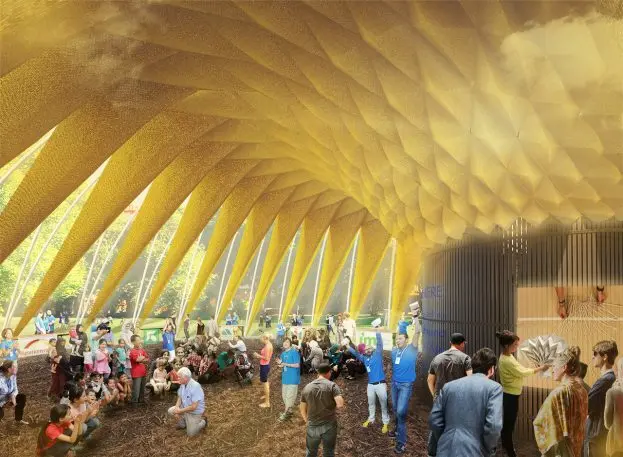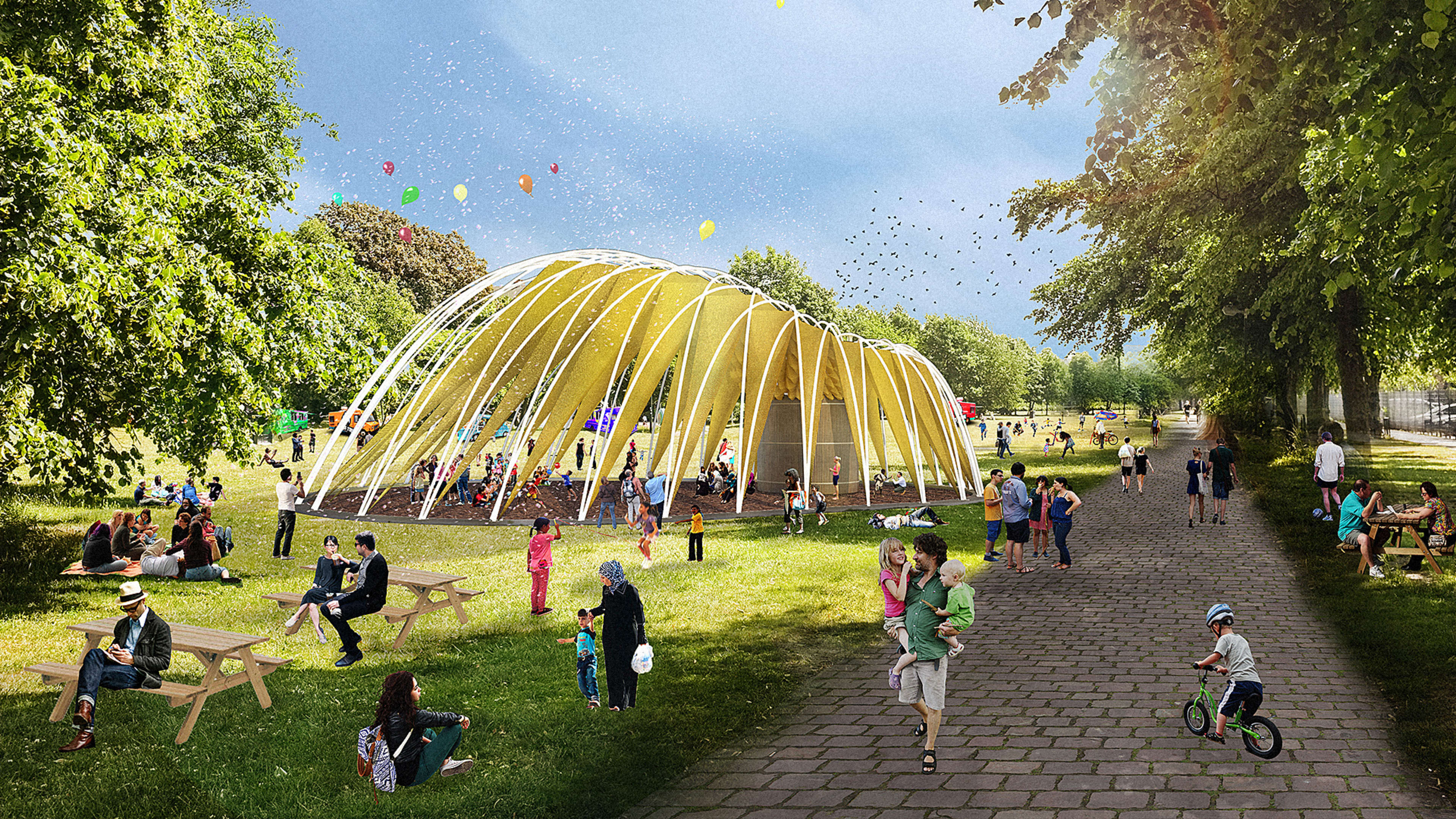At the height of the European refugee crisis in 2015, as many as 10,000 refugees and asylum seekers arrived in the city of Malmo, Sweden, every day. And while many were sent elsewhere in the country–from small towns to temporary housing at a Wild West theme park–others stayed, and many of them (along with even newer arrivals) are still struggling to find work.
This summer, the city will experiment with a new way to help refugees find jobs: a pop-up pavilion in a city park where refugees can get training, connect with local nonprofits, and, most importantly, network with native-born Swedes.
“We call it a marketplace of ideas, information, and connection,” says Rik Ekstrom, principal at the New York-based design studio ARExA, who collaborated with designers Gustav Fagerström, Milad Barosen, and Nathan King on the winning design for the pavilion, which was created for a Van Alen Institute competition called Opportunity Space, that asked designers to create a concept for an “Opportunity Festival” to be held in August at the park.
During the day, the pavilion will host workshops, art shows and music performances, discussions, and employment services and will serve as a meeting place. At night, the structure transforms, bending up to turn into a beacon of light. Because the offerings go beyond simple job placement, the goal is to draw in as many Malmo residents as possible. Refugees will have the opportunity to meet long-term residents who they otherwise might not encounter while living in somewhat segregated immigrant neighborhoods.

“It’s intended to be a very public event and celebration, but it’s not a refugee center,” says Ekstrom. “It’s not a sequestered camp or Ellis Island kind of situation. It’s intended to invite all Swedes, all people from Malmo, to come see what’s happening and to eat good food, hear good music, see good art, hear demonstrations, and meet new neighbors.”
Immigrants in Sweden often find it difficult to find work. While the unemployment rate among people born in Sweden was 4.7% in 2016, it was 22.5% for those born outside the EU. In some cases, refugees might lack the skills for good jobs, but even educated immigrants are more likely to be unemployed than native-born Swedes. The influx of refugees in 2015, when Sweden took in more asylum seekers per capita than any other European country, made competition for jobs even steeper. One key factor that is lacking, the designers believe, is a strong local network, and the public location in the park may help make more of those connections.
“[The pavilion] is really focused on building relationships, and the social infrastructure that will allow people to come into this society and be productive,” Ekstrom says. “Work is the great divider–the people who have work are enfranchised, they’re part of the system, part of society, and people who don’t have work feel very much separate.”
The design took inspiration from older Swedish union halls, and the fact that the Swedish labor movement began in Malmo in the late 1800s. “This specific project was inspired by the idea that we could, in the same place, in a new century, be part of the beginning of the next phase of progressive thinking about how to serve people in cities,” he says. “Swedish cities are actively being transformed, and that’s only a good thing. The kind of potential that this new energy into Swedish culture and Swedish urban life will bring, are great opportunities for advancement, for innovation, for great ideas, and for a broadening of cultural identity.”
The pop-up building will be up at Malmo’s Enskifteshagen Park from August 22 to September 2, and then is designed to easily be disassembled and taken elsewhere.
Recognize your brand's excellence by applying to this year's Brands That Matters Awards before the early-rate deadline, May 3.
